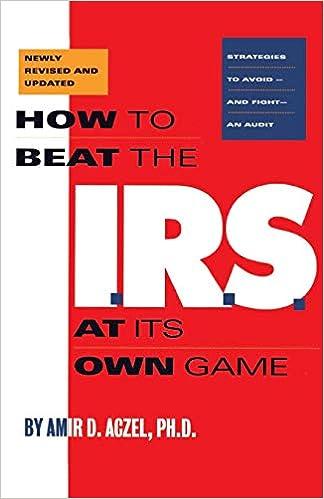I don't understand how to do the joirnal entries.

You make adjusting journal entries for the month of January as needed. (Start with Journal no. Jan24.1.) You carefully consider the following: - Math Revealed! used the straight-line method to determine depreciation expense for all fixed assets. - Monthly depreciation expense for the equipment purchased prior to 12/31 is $65.00. (Computer \$50; Printer \$7.50; Calculators \$7.50) - Math Revealed! purchased \$1,690 of furniture on 1/2. You expect the furniture to last 8 years, with a $250 salvage value. You take a full month depreciation on the furniture. - Two computers ($1,260) and six calculators ($312) were also purchased on 1/2. You expect the computers to have a 3 -year life (no salvage value) and the calculators to have a 4-year life (no salvage value). You take a full month depreciation on the equipment. On 1/30, shelving was installed. The cost of the shelving was $820. You expect the shelving to last for the term of the lease ( 24 months). You estimate the salvage value at $100 at the end of the 2 years. You started using the shelving on February 1. - You check the supplies on hand. You estimate that $185 of tutoring supplies were used during January. - You charge the amount to a new account (Tutoring supplies expense, a sub-account of Office and Tutoring Costs). You use 632 as the account number and Other Business Expenses as the detail type in the Tax form section field. - The insurance policy premium paid in January was \$480. The policy term is 1/112/31/24. - You check to make sure that all the revenue recorded in January was earned during the month. - You realize that the $3,000 paid by Teacher's College on 1/27 (INV-1011) was for a workshop to be held in February. - You ask Martin about the Marley's two weeks of Persistence sessions paid for on 1/19 (SR-104). Martin says she actually finished all the sessions by the end of January. - You also take a look at INV-1009 to Arnie Wang. Martin says half of the S420 billed on 1/12 was for February tutoring. - TIP: Consider whether you need a new account here. Choose an account number that fits with the account numbering scheme (assets are 100 s; liabilities are 200 s; revenues are 400 s; expenses are 600 s). - Martin has agreed to pay his father interest on the $2,500 loan to help get the basiness started. The last payment was made on 12/31/23. The annual interest rate (simple 2024 Cambridge Business Publishers interest) on the loan is 6%. You forgot to pay him in January. You call and let him know that the check will come in February. TIP: Just because you didn't pay it in January doesn't mean you don't owe it in January. Consider whether you need a new account here. You make adjusting journal entries for the month of January as needed. (Start with Journal no. Jan24.1.) You carefully consider the following: - Math Revealed! used the straight-line method to determine depreciation expense for all fixed assets. - Monthly depreciation expense for the equipment purchased prior to 12/31 is $65.00. (Computer \$50; Printer \$7.50; Calculators \$7.50) - Math Revealed! purchased \$1,690 of furniture on 1/2. You expect the furniture to last 8 years, with a $250 salvage value. You take a full month depreciation on the furniture. - Two computers ($1,260) and six calculators ($312) were also purchased on 1/2. You expect the computers to have a 3 -year life (no salvage value) and the calculators to have a 4-year life (no salvage value). You take a full month depreciation on the equipment. On 1/30, shelving was installed. The cost of the shelving was $820. You expect the shelving to last for the term of the lease ( 24 months). You estimate the salvage value at $100 at the end of the 2 years. You started using the shelving on February 1. - You check the supplies on hand. You estimate that $185 of tutoring supplies were used during January. - You charge the amount to a new account (Tutoring supplies expense, a sub-account of Office and Tutoring Costs). You use 632 as the account number and Other Business Expenses as the detail type in the Tax form section field. - The insurance policy premium paid in January was \$480. The policy term is 1/112/31/24. - You check to make sure that all the revenue recorded in January was earned during the month. - You realize that the $3,000 paid by Teacher's College on 1/27 (INV-1011) was for a workshop to be held in February. - You ask Martin about the Marley's two weeks of Persistence sessions paid for on 1/19 (SR-104). Martin says she actually finished all the sessions by the end of January. - You also take a look at INV-1009 to Arnie Wang. Martin says half of the S420 billed on 1/12 was for February tutoring. - TIP: Consider whether you need a new account here. Choose an account number that fits with the account numbering scheme (assets are 100 s; liabilities are 200 s; revenues are 400 s; expenses are 600 s). - Martin has agreed to pay his father interest on the $2,500 loan to help get the basiness started. The last payment was made on 12/31/23. The annual interest rate (simple 2024 Cambridge Business Publishers interest) on the loan is 6%. You forgot to pay him in January. You call and let him know that the check will come in February. TIP: Just because you didn't pay it in January doesn't mean you don't owe it in January. Consider whether you need a new account here









